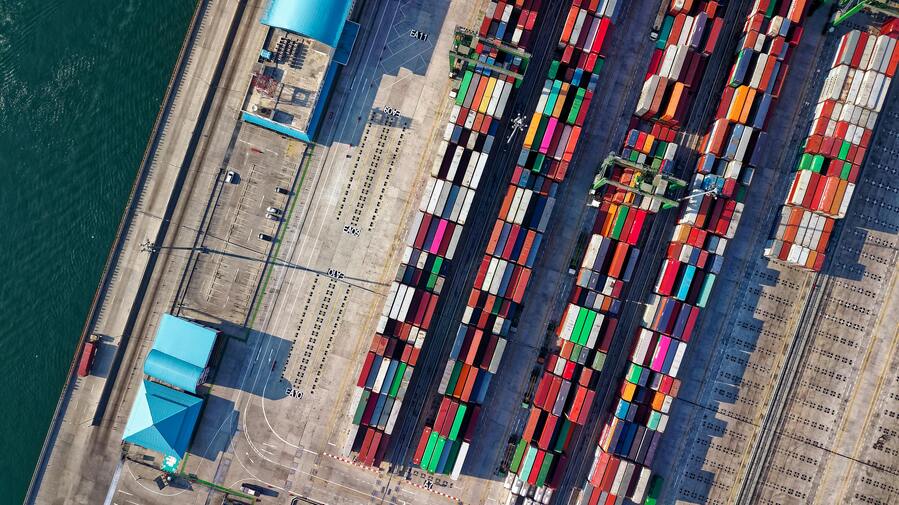Do you use data analysis in your business?
Within the data we collect there is important knowledge that can help us drive our business forward. But the data itself is not very useful, the analysis we make of it is what makes the difference.
That’s why visualising data comes into play, which is nothing more than presenting it in a visual format, with which we can see if there are any patterns or connections that would otherwise go unnoticed.
Visualization allows us to bring the data to life.
Advantages of data visualization
A strategic decision supported by real data has a much higher probability of success. Thanks to data visualisation, not only will we have concrete and tangible figures, but they will also be easier to digest and display, especially for departments in the company that may be less familiar with how these data are analysed and used.
In addition, we have access to new tools, such as time diagrams, with which we can track the progress of our actions, as well as detect trends, and thus have the knowledge to make informed strategic decisions.
Types of charts for data visualisation
The amount of graphics that can be used for data visualization is almost infinite, and will depend largely on the needs of the company at any given time. Even so, some of the most interesting ones are the following:
Pie charts
They are used to show how different parts represent a total. They can be used to represent survey results or preferences, and to represent proportions. Some applications of this graph could be to see the preference of a supermarket’s customers for particular brands of a product or the proportion of different nationalities of users visiting our website.
Scatter graphs
This type of chart uses numerical values for both axes, rather than using categories on either axis as in other charts. It is a type of graph widely used in statistical inference, and allows us to study the relationship between two facts, for example we could study the correlation between the hours in a shift and the productivity of our employees at each moment, to identify which are the best hours for them to rest.
Social graphs
These graphics consist of nodes and arrows interconnected with each other. They are especially useful for tracking contacts and their connections, which will help us to identify possible relationships of interest to our company.
Data visualization tools
There are numerous tools, many of them open source, that can be used for data visualization. We will now examine which are some of the most relevant.
Gephi
It is an open source program to visualize networks. Gephi offers many possibilities such as grouping nodes of the network, coloring them, giving them proportional sizes to indicators, among others. It serves mainly to assist in data analysis and hypothesis formulation, as well as to isolate data structures that allow the discovery of patterns, all in a quite intuitive way thanks to the interactive visualizations. The most relevant features of the program include dynamic data analysis, cartographic creations and the use of pre-established metrics.
Many Eyes
Many Eyes allows conversation around a visualisation, what does this mean? It allows users to give their opinions on certain graphics and to propose innovative approaches based on existing data. With this practice we can make the most of our content and use our data as efficiently as possible. The procedure is very simple, as it is based on uploading the data and choosing a type of display.
Quadrigram
It is a visual programming software executable in browsers, whose function is to build and share in a simple way interactive data visualization projects through a system of modules connected between them, in which operations are applied or the data flow of each module is controlled, allowing us to customize and make iterations and prototypes of interactive solutions based on data extracted from analysis processes. The application contains a collection of examples of pre-designed templates that allow all kinds of functions, such as monitoring, analysis, research and communication with data, to be easily transformed into a customised project for data analysis. Interactive and combinable data visualisations can be created, choosing from a wide range of tools.
Nodebox
It is an application designed to create static or dynamic 2D graphics. It stands out for its great capacity, which allows it to handle a large volume of data.
R
It is an open source statistical tool developed by Bell Laboratories. Its main function is the creation of statistical graphs and data analysis. It is characterized by a powerful software that supports a large volume of data and extensive libraries. If you are an advanced user you will be able to use C language for more complex tasks.
Infogr.am
It is an Internet service to create and share data visualization for both experts and beginners. It allows you to create infographics, information visualizations and data representation schemes in a useful and striking way.
D3 Data Driven Documents
It is a visual storytelling tool based on a JavaScript library for data-based document manipulation. D3 is used to link data with a model into objects, which allows documents to be represented and transformed.










